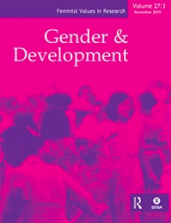Women’s oral knowledge and the poverty of formal education in the SE Peruvian Amazon

Overview
Formal education is often assumed to be a positive force for change, enabling people to find a route out of poverty. However, this is not always the case. The Haramkbut community in the Peruvian Amazon are now questioning the widespread assumption that schooling can provide knowledge and skills for establishing alternative livelihoods. Indigenous knowledge and traditional forms of work have been devalued through economic changes forced upon the Haramkbut by ecological destruction and environmental degradation. The result of this has been a process of impoverishment, which has been worsened by missionary education and an adherence to the national Spanish-language curriculum. In contrast, the indigenous model of intercultural bilingual education which is currently being ‘rolled out’ to the Harakmbut puts indigenous knowledge and practices at the centre of its curriculum, pedagogy and philosophy. This in turn contrasts with the education reform measures currently being implemented nationally through the Ministry of Education. Education could and should be a positive force in the lives of the Harakmbut people, and Harakmbut women in particular, and in their fight against an impoverishment of their way of life.
This article is hosted by our co-publisher Taylor & Francis. For the full table of contents for this and previous issues of this journal, please visit the Gender and Development website.
Keywords
Additional details
Author(s)
How to cite this resource
Citation styles vary so we recommend you check what is appropriate for your context. You may choose to cite Oxfam resources as follows:
Author(s)/Editor(s). (Year of publication). Title and sub-title. Place of publication: name of publisher. DOI (where available). URL
Our FAQs page has some examples of this approach.
